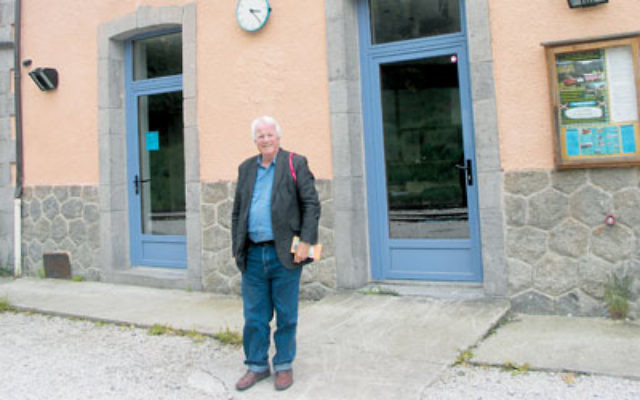Villagers unite in wartime rescue
IN December 1942, the Nazis decided the remote mountain village of Le Chambon-sur-Lignon in the Auvergne region of central-eastern France, would be the ideal place for convalescing German soldiers.
Accordingly, the walking wounded were installed in a hotel in Le Chambon’s main street. Next door was a guesthouse packed with Jewish refugee children, but they barely rated a glance from the soldiers. Just as well: the local headquarters of the French Resistance was opposite the hotel.
This jaw-dropping scenario is recounted by Sydney-born author Peter Grose in his compelling new book, A Good Place To Hide, recently published by Allen & Unwin.
Its title couldn’t be more apt, although Grose had no inkling of that in 2009 when he was lunching with his long-time friend, academic Winton Higgins, who lectures in comparative genocide studies at the University of Technology, Sydney.
“We were just two old mates chatting away when Winton mentioned Le Chambon,” recalls Grose. “I live in France, but I’d never heard of it. ‘Look it up,’ said Winton. ‘That village saved thousands of Jews during World War II.’”
Grose hit the internet. The affable 72-year-old former journalist, literary agent and publisher had written two highly acclaimed books about Japan’s attacks on Australia during World War II – An Awkward Truth and A Very Rude Awakening – and was supposed to be tackling a third, but Le Chambon doomed it to the back burner.
“I was astounded by what I read,” says Grose. “What a cast of characters!”
They are brought to vivid life in A Good Place To Hide. Virginia Hall, the legendary American called “the most dangerous of all Allied spies” by the Gestapo, is among them. As is Grose’s favourite, Oscar Rosovsky – “still alive and as mischievous as ever” – the bespectacled Jewish teenager who may well have been the most prolific and successful forger of identity papers in wartime France.
The numerous villagers who risked their lives in protecting Jews from the Nazis and Vichy government soldiers were equally admirable – “No Jew was ever betrayed by them” – and they have not been forgotten. In 1990, Yad Vashem listed “the residents of Le Chambon-sur-Lignon and neighbouring communes” as Righteous Among the Nations.
It is one of only two villages in the world – the other being Nieuwlande in Holland – to have been given that honour, learned Grose during his lengthy research which included numerous interviews, mostly conducted in French.
In the process, he delved into the history of Le Chambon and its neighbours on the solidly Protestant plateau of Vivarais-Lignon to understand why the villagers had such steely resistance to oppressors and a tradition of safe-guarding those in peril.
Grose soon knew the answer: “It’s Huguenot country and its people know from their history Especially valuable was the information he gleaned from a film and a book about Le Chambon’s role during 1940-44: French filmmaker Pierre Sauvage’s remarkable 1989 documentary Weapons of the Spirit and late American philosopher Philip Hallie’s 1979 book Lest Innocent Blood Be Shed.
The latter was the clincher for Grose. “Hallie was a moral philosopher, not a historian or a journalist, and in giving sole credit to Andre Trocme, he upset a lot a people,” says the author who was The Australian’s first London correspondent. “I realised the full story hadn’t been told and decided to do it.”
He agrees that Trocme, the dynamic pacifist pastor of Le Chambon, was indeed the man who initiated the rescue operation – and continued to bolster it – that saved at least 3500 Jews from the Holocaust.
“But there were 12 pastors in the area, not just one, and they all played their part along with all those villagers who took incredible risks,” points out Grose.
“The record was set straight during a symposium held in Le Chambon in 1990. One by one, people told their stories and if they embellished or confused anything they got corrected pretty smartly. The transcript of that symposium ran to hundreds of pages and was invaluable for my book. So was my wife Roslyn. She’s fluent in French.”
To Peter Grose’s joy, A Good Place To Hide has been hailed by the people whose opinions matter most to him, as the first full, accurate account of what happened in Le Chambon during the horror years.
“The villagers have all read it and told me, ‘This is the book we’ve been waiting for.’ It’s been a huge thrill.”
A Good Place To Hide is published by Allen & Unwin, $32.99 (rrp).
REPORT by Zelda Cawthorne
PHOTO of author Peter Grose outside the railway station in Le Chambon.


comments